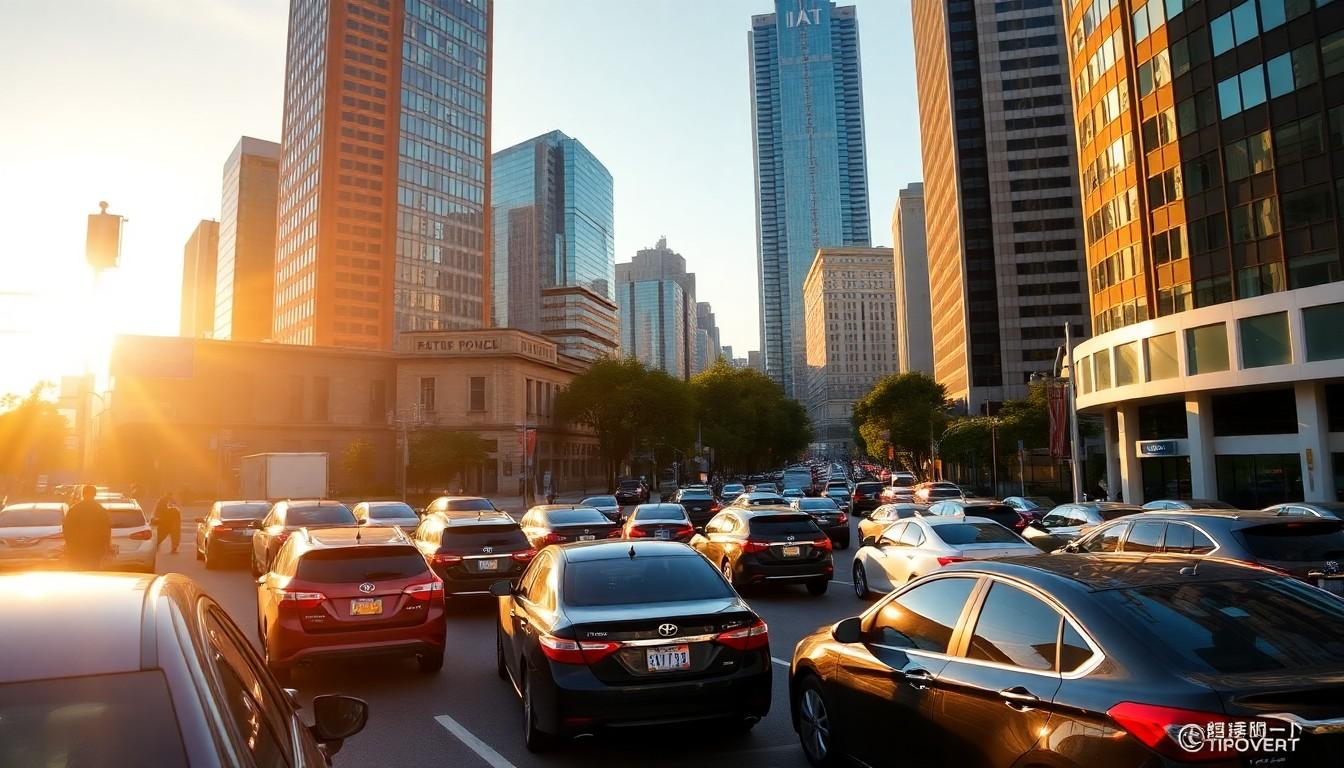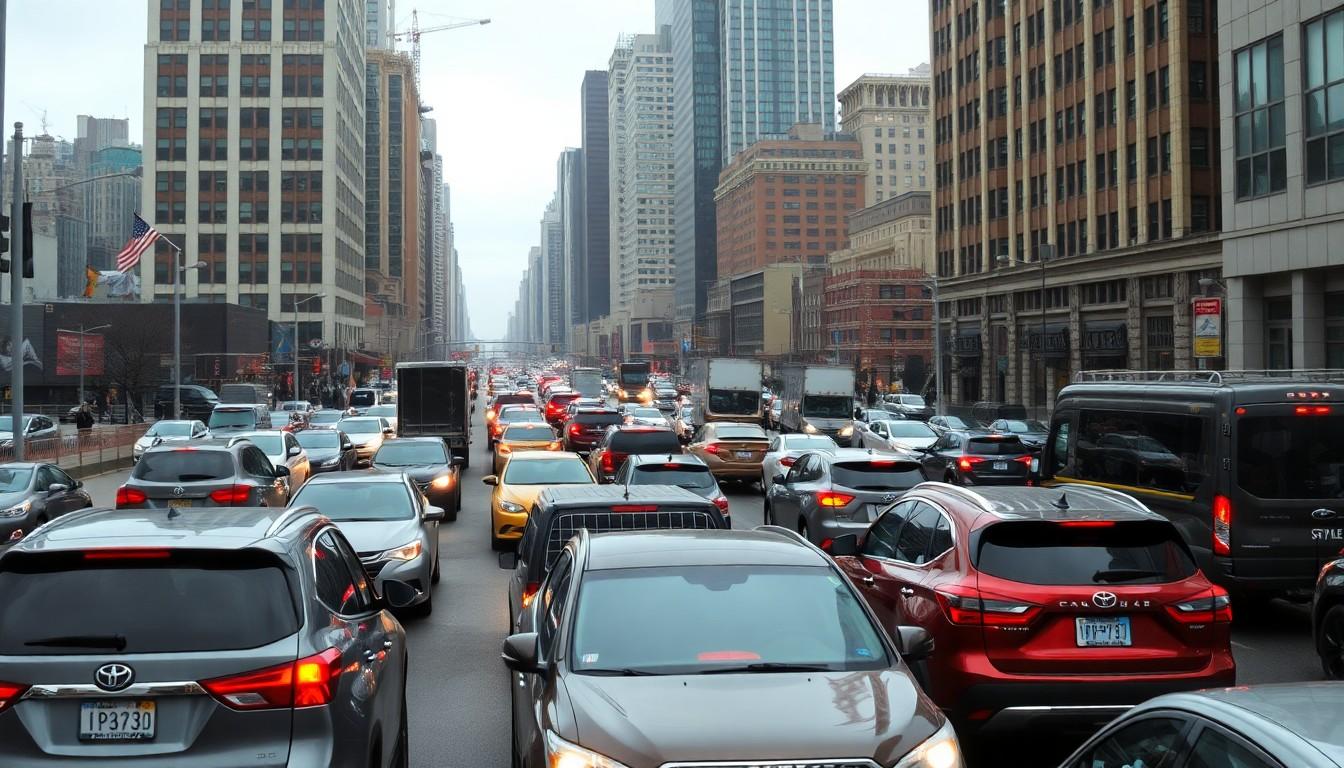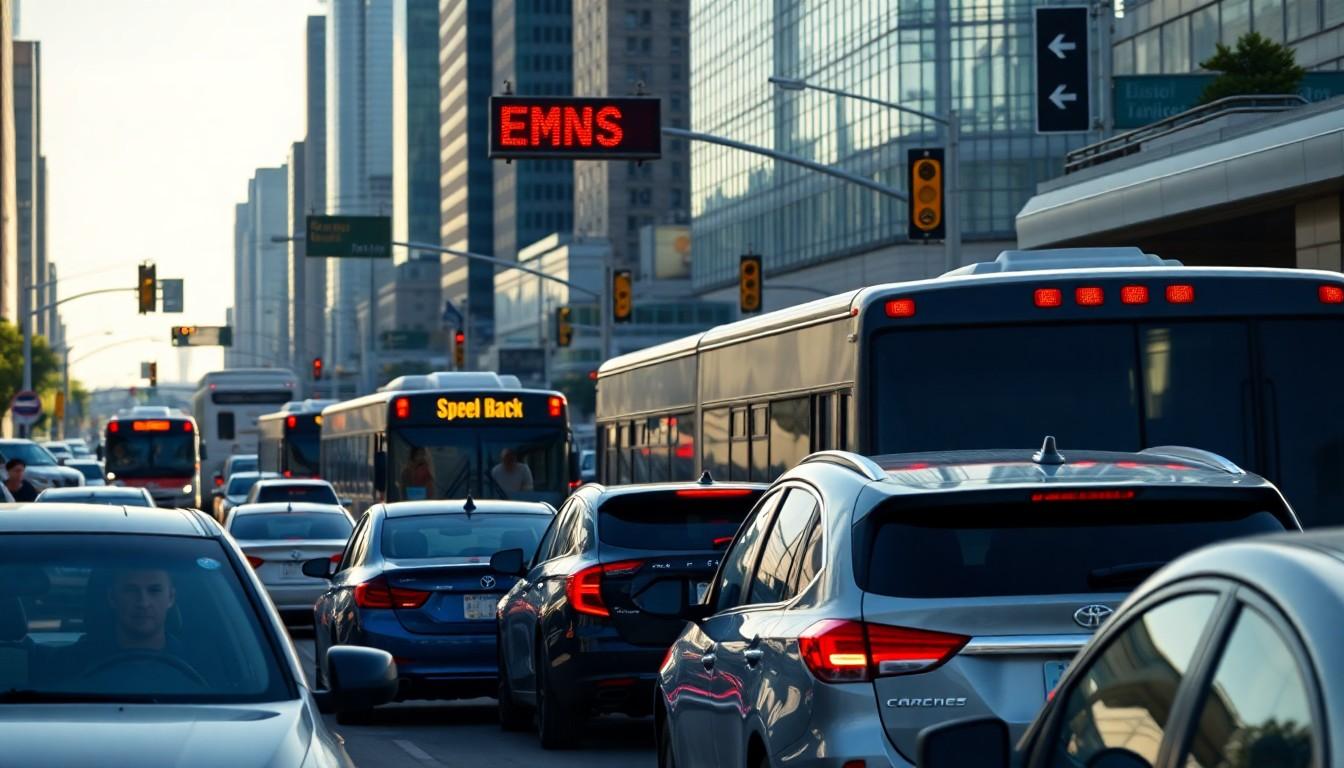Ever wondered how long it takes to drive a mile? It’s a common question whether you’re planning a road trip, estimating arrival time, or simply curious about travel distances. While the answer seems straightforward, several factors can influence the time it takes to cover that single mile.
We’ve all been in situations where we need to calculate travel time quickly. Though driving one mile typically takes 1-2 minutes under ideal conditions, real-industry driving involves variables like speed limits, traffic conditions, and road types. Understanding these factors can help you make more accurate time estimates for your journeys, whether you’re driving across town or planning a longer trip.
Understanding Time to Drive One Mile
The time it takes to drive one mile varies significantly based on your speed. At 60 mph, you’ll cover one mile in exactly 1 minute. Driving at 30 mph extends this time to 2 minutes per mile. Most city driving occurs between 25-35 mph, resulting in average travel times of 1.7-2.4 minutes per mile.
Highway speeds dramatically reduce mile travel times. At 70 mph, a mile passes in just 51 seconds, while 55 mph equates to approximately 65 seconds per mile. Rural roads typically allow for speeds around 45-55 mph, giving mile travel times between 65-80 seconds.
Slow-moving traffic in congested areas extends travel time considerably. During heavy traffic, speeds might drop to 10-15 mph, meaning a single mile could take 4-6 minutes to traverse. School zones and residential areas with 20-25 mph limits result in 2.4-3 minute mile times.
Speed is only one factor affecting drive time calculations. Road conditions, weather, traffic signals, and construction zones all impact actual travel duration. A seemingly quick mile can stretch to 10+ minutes when encountering multiple red lights or stop signs in urban environments.
Average Driving Times Per Mile in Different Environments

The time required to drive one mile varies dramatically across different driving environments. Data from major metropolitan areas shows important time differences based on location, time of day, and road type.
City Driving Times
City driving creates the longest per-mile travel times, especially during peak rush hours. During morning commutes (8am-9am), Miami tops the charts at 2.91 minutes per mile, followed closely by New York City at 2.77 minutes and Boston at 2.51 minutes per mile. San Diego residents enjoy significantly faster movement at just 1.71 minutes per mile—41% quicker than Miami drivers. Evening rush hour (5pm-6pm) slows traffic even further, with Miami reaching 3.09 minutes per mile, New York City at 3.08 minutes, and Los Angeles at 3.06 minutes. Cities like St. Louis and Minneapolis offer more reasonable commute times around 2 minutes per mile, representing a 54% improvement over Miami’s congested streets.
Highway Driving Times
Highway driving typically produces the fastest per-mile travel times of any road environment. While exact city-by-city highway data isn’t available in current research, highways generally allow for sustained higher speeds with fewer interruptions than city streets. The reduced number of traffic signals, intersections, and pedestrian crossings contributes to this efficiency. Drivers can often maintain speeds between 55-70 mph on highways, translating to significantly reduced per-mile travel times compared to urban environments.
Rural Road Driving Times
Rural road driving presents a middle ground between congested city streets and efficient highways. These roads often feature varying conditions including different speed limits, occasional stops, and potential terrain challenges. Rural driving times frequently fall somewhere between the extremes of city crawls and highway cruising. The absence of massive traffic volumes allows for more consistent travel speeds, though lower speed limits than highways and occasional small-town congestion prevent rural roads from matching highway efficiency. More exact research into rural driving times would provide clearer comparisons between all three road environments.
Factors Affecting Drive Time Per Mile

The time it takes to drive one mile isn’t constant and varies based on several key factors. Understanding these variables helps create more accurate travel time estimates for both short trips and longer journeys.
Traffic Conditions
Traffic congestion significantly impacts drive time per mile, particularly during peak hours. Morning rush hour (8am-9am) creates an average drive time of 2.21 minutes per mile across major metro areas. Cities experience vastly different congestion levels – Miami tops the charts at 2.91 minutes per mile, followed by New York City at 2.77 minutes, and Boston at 2.51 minutes. Less congested cities like San Diego, St. Louis, and Minneapolis enjoy faster travel times ranging from 1.71 to 1.81 minutes per mile.
Evening rush hour (5pm-6pm) proves even more challenging, with average drive times increasing to 2.55 minutes per mile. Miami again leads with 3.09 minutes per mile, closely followed by New York City at 3.08 minutes and Los Angeles at 3.06 minutes. Cities with better traffic flow like St. Louis, Minneapolis, and Phoenix maintain faster travel times between 2 and 2.14 minutes per mile.
Speed Limits
Posted speed limits play an important role in determining drive time per mile, though their impact varies based on actual traffic conditions. Higher speed limits theoretically allow for faster travel times, but this advantage disappears in congested areas. Data shows that even though potentially higher speed limits, cities like Miami and New York City consistently experience longer per-mile drive times compared to less congested metropolitan areas like San Diego and St. Louis. The relationship between posted limits and actual travel speed becomes more meaningful in areas with consistent traffic flow.
Weather Considerations
Weather conditions create substantial variations in drive time per mile by forcing drivers to reduce speeds for safety. Heavy rain decreases visibility and creates slippery road surfaces, naturally extending travel times. Snow and ice conditions demand even slower speeds and more cautious driving, potentially doubling normal drive times. Fog presents similar challenges by dramatically reducing visibility and requiring more defensive driving approaches. Though exact time increases aren’t specified in the data, these weather factors consistently extend drive times regardless of the posted speed limits or typical traffic patterns in any given area.
Calculating Your Personal Mile Drive Time

Determining how long it takes to drive one mile depends primarily on your average speed. This calculation becomes essential for accurate trip planning and understanding your daily commute times.
Using Average Speed to Estimate Drive Time
The time needed to drive one mile connects directly to your vehicle’s speed using a simple formula: Time = Distance/Speed. At the global average speed of 18.6 mph, driving one mile takes approximately 3.23 minutes. Interstate driving in the US at an average speed of 66 mph reduces this time to just 0.91 minutes per mile. Urban environments with typical speeds of 30 mph result in about 2 minutes to cover a mile distance. Calculating your personal drive time requires dividing 60 (minutes in an hour) by your speed in miles per hour – this gives you the minutes needed to travel one mile at your exact speed.
| Average Speed | Time to Drive 1 Mile |
|---|---|
| 18.6 mph (Global Average) | 3.23 minutes |
| 66 mph (US Interstate Average) | 0.91 minutes |
| 30 mph (Urban Average) | 2 minutes |
| 10-20 mph (Heavy Traffic) | 3-5 minutes |
Real-Industry Applications
Traffic conditions significantly alter drive times, with congested areas potentially reducing speeds to 10-20 mph and extending one-mile travel times to 3-5 minutes. Road types impact your mile drive time dramatically – urban roads with multiple intersections and traffic signals create longer travel times compared to uninterrupted highway stretches. Weather circumstances like rain, snow, or fog necessitate slower speeds for safety, adding valuable minutes to your one-mile journey. Construction zones often require reduced speeds and may involve detours, extending travel times beyond normal calculations. Route planning benefits from understanding these variables, allowing for more accurate time estimates rather than relying solely on distance measurements.
Planning Trips Using Mile-Based Time Estimates

Mile-based time estimates provide a practical foundation for effective trip planning. Applying these calculations to real-industry scenarios helps create more accurate travel timelines for both short errands and extended journeys.
Incorporating Buffer Time
Travel delays occur frequently due to unpredictable factors on the road. When planning trips, it’s smart to add buffer time beyond the basic mile-based calculations – typically 10-15% extra for short trips and 5-10% for highway journeys. Traffic conditions can change rapidly, especially in urban environments where a single mile might take 4 minutes instead of the expected 2 minutes during congestion periods.
Calculating Total Travel Time
Total travel time emerges from combining all segment-exact mile times along your route. For example, a 10-mile journey involving 3 miles of city driving (at 25 mph), 5 miles of highway (at 65 mph), and 2 miles of rural roads (at 45 mph) calculates as:
- City portion: 3 miles × 2.4 minutes = 7.2 minutes
- Highway portion: 5 miles × 55 seconds = 4.6 minutes
- Rural portion: 2 miles × 1.33 minutes = 2.7 minutes
- Total estimated travel time: 14.5 minutes
| Road Type | Distance | Speed | Time per Mile | Total Time |
|---|---|---|---|---|
| City | 3 miles | 25 mph | 2.4 minutes | 7.2 minutes |
| Highway | 5 miles | 65 mph | 55 seconds | 4.6 minutes |
| Rural | 2 miles | 45 mph | 1.33 minutes | 2.7 minutes |
Using Technology For Better Estimates
Modern navigation apps enhance mile-based estimates with real-time traffic data. These tools account for current conditions beyond basic speed calculations, integrating factors like construction zones, accidents, and peak travel times. GPS navigation systems continuously update arrival estimates based on changing conditions, offering more precision than static mile-time calculations.
Planning For Time-Sensitive Travel
Time-sensitive travel requires extra attention to mile-based timing factors. For critical appointments, considering the worst-case scenario for each mile traveled provides safer margins. In cities like Miami, where morning commutes average 2.91 minutes per mile, planning based on a 3-minute-per-mile estimate creates a safer buffer for important meetings or flights.
Conclusion
Understanding how long it takes to drive a mile helps us plan our journeys more effectively. While the basic calculation of 1-2 minutes per mile serves as a starting point, we’ve seen that real-industry conditions often tell a different story.
By factoring in speed limits, traffic patterns, weather, and road types, we can create more realistic time estimates for our trips. Whether you’re handling busy city streets at 2-3 minutes per mile or cruising highways at under a minute per mile, these calculations make a important difference.
For the most accurate planning, we recommend using navigation apps with real-time data and adding buffer time for unexpected delays. This approach ensures you’ll arrive on time, whether for a quick errand or an important appointment across town.
Frequently Asked Questions
How long does it typically take to drive one mile?
Under ideal conditions, driving one mile typically takes between 1-2 minutes. At highway speeds of 60 mph, it takes just 1 minute, while at 30 mph (common in urban areas), it takes 2 minutes. However, actual drive times vary significantly based on traffic conditions, road type, weather, and other factors.
What affects the time it takes to drive a mile?
Several factors impact mile drive time: traffic congestion (especially during rush hours), speed limits, road conditions, weather (rain, snow, fog), traffic signals, and construction zones. Urban driving tends to be slower due to frequent stops, while highways allow for faster, uninterrupted travel. Your vehicle type and driving habits can also influence travel time.
How long does it take to drive a mile in city traffic?
In cities, driving one mile typically takes 1.7-2.4 minutes under normal conditions. However, during peak rush hours, this can extend to 3-6 minutes, particularly in congested cities like Miami (averaging 2.91 minutes per mile in morning rush) and New York City. Traffic signals, pedestrians, and stop-and-go conditions significantly increase urban travel times.
Is highway driving faster per mile than city driving?
Yes, highway driving is considerably faster per mile. At 70 mph on highways, you can cover a mile in just 51 seconds. Highways offer the quickest per-mile times due to higher sustained speeds, fewer interruptions like traffic lights, and limited access points. Even during busier periods, highways typically maintain better flow than city streets.
How do I calculate how long it will take me to drive one mile?
Use the formula Time = Distance/Speed. At the global average speed of 18.6 mph, one mile takes about 3.23 minutes. At interstate speeds (66 mph), it takes just 0.91 minutes. In urban areas (30 mph), expect about 2 minutes per mile. For accurate calculations, consider your expected average speed based on road types and conditions.
How should I plan for a trip using mile-based time estimates?
Add buffer time to your calculations—10-15% extra for short trips and 5-10% for highway journeys. For mixed routes, calculate each segment separately based on the environment (city/highway/rural). Use navigation apps with real-time traffic data for greater accuracy. For time-sensitive travel, always plan using worst-case scenario estimates, especially in congested areas.
Does weather affect drive time per mile?
Yes, significantly. Adverse weather conditions like heavy rain, snow, and fog necessitate slower driving speeds for safety, increasing per-mile travel times. Wet roads can reduce visibility and traction, while snow and ice may require speeds as low as 20-30 mph even on highways, potentially doubling or tripling normal drive times.
How does rush hour impact drive time per mile?
Rush hour dramatically increases drive time per mile, particularly in urban areas. During peak commute hours (typically 7-9 AM and 4-6 PM), travel times can double or triple compared to off-peak periods. Cities like Miami and New York see average per-mile times exceed 3 minutes during rush hour, compared to 1-2 minutes during lighter traffic periods.







